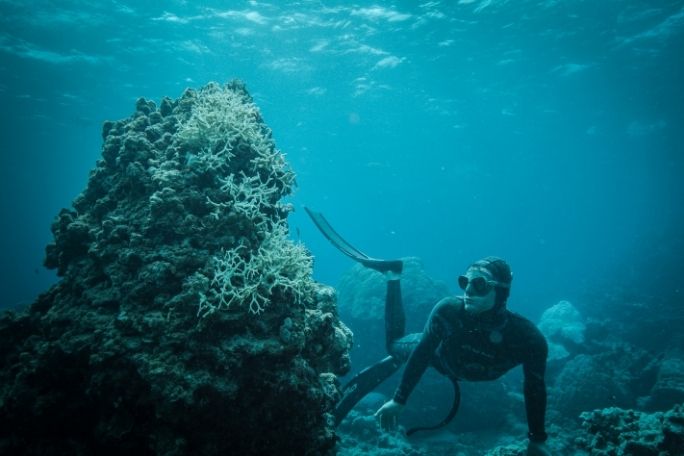Lesson summary
This lesson incorporates clips from Blue The Film as learning inspiration. In this lesson students draw conclusions and consolidate their learning from the Blue The Film: Inquiry – Years 5 & 6. They begin by considering what persuasive techniques are used in Blue The Film. Students begin by looking at a range of persuasive devices and identify which of these are used by some of the Ocean Guardians of Blue. They then identify which topics or issues raised in this unit are most important to them, and work to create a persuasive piece to convince others to take action on this issue. Students will share their pieces with peers and incorporate feedback before sharing with the class.
Learning intentions:
Students will...
- understand how to use a range of persuasive techniques
- identify which persuasive techniques are used in Blue The Film
- identify which issues raised in this unit are most important to them.
Success criteria:
Students can...
- use a range of persuasive techniques
- articulate some of the main messages of Blue
- use persuasive techniques
- produce a piece that incorporates persuasive messaging.
Lesson guides and printables
Lesson details
Curriculum mapping
Australian Curriculum content descriptions:
Year 5 English:
- Plan, draft and publish imaginative, informative and persuasive print and multimodal texts, choosing text structures, language features, images and sound appropriate to purpose and audience (ACELY1704)
- Re-read and edit student’s own and others’ work using agreed criteria for text structures and language features (ACELY1705)
Year 6 English:
- Plan, draft and publish imaginative, informative and persuasive texts, choosing and experimenting with text structures, language features, images and digital resources appropriate to purpose and audience (ACELY1714)
- Re-read and edit students’ own and others’ work using agreed criteria and explaining editing choices (ACELY1715)
Year 5 HASS:
- The environmental and human influences on the location and characteristics of a place and the management of spaces within them (ACHASSK113)
Syllabus outcomes: EN3-2A, GE3-2, GE3-3.
General capabilities: Critical and Creative Thinking, Literacy.
Cross-curriculum priority: Sustainability OI.5.
Relevant parts of Year 5 English achievement standards: Students create imaginative, informative and persuasive texts for different purposes and audiences. They edit their work for cohesive structure and meaning.
Relevant parts of Year 6 English achievement standards: Students create detailed texts elaborating on key ideas for a range of purposes and audiences. They make and explain editorial choices based on criteria.
Relevant parts of Year 5 HASS achievement standards: Students identify and describe the interconnections between people and the human and environmental characteristics of places, and between components of environments.
Unit of work: Blue The Film: Inquiry – Years 5 & 6.
Time required: 70 mins.
Level of teacher scaffolding: Medium – lead students in discussions.
Resources required
- Student Worksheet – one copy per student
- Device capable of presenting a website to the class
- Butcher’s paper and pens
- Materials/equipment for persuasive piece, such as camera, recording device, art materials, writing materials, infographic program (e.g. Piktochart)
- Persuasive Writing Tips, Letter Writing Tips, Podcast Making Tips. Film Making Tips. Persuasive Piece Assessment Rubric
- Optional – How to be Persuasive
Skills
This lesson is designed to build students’ competencies in the following skills:
- Communication
- Creativity
- Critical thinking
Additional info
Blue is a feature documentary film charting the drastic decline in the health of our oceans. With more than half of all marine life lost and the expansion of the industrialization of the seas, the film sets out the challenges we are facing and the opportunities for positive change. Blue changes the way we think about our liquid world and inspires the audience to action. Find out how to screen or download the film here. Along with the film is an ambitious global campaign to create advocacy and behaviour change through the #oceanguardian movement. To become an ocean guardian, see the website.


Welcome back!
Don't have an account yet?
Log in with:
By signing up to Cool.org you consent and agree to Cool's privacy policy to
store, manage and process your personal information. To read more, please see
our privacy policy here(Opens in new tab).
Create your free Cool.org account.
Many of our resources are free, with an option to upgrade to Cool+ for premium content.
Already have an account?
Sign up with:
By signing up to Cool.org you consent and agree to Cool's privacy policy to
store, manage and process your personal information. To read more, please see
our privacy policy here(Opens in new tab).